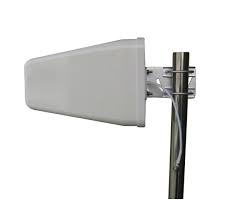In the vast landscape of antenna technology, the Log-Periodic Dipole Antenna (LPDA) stands out as a versatile and efficient solution for various applications. This article delves into the intricacies of LPDA antenna, exploring their design principles, advantages, and diverse applications.
Understanding LPDA Antenna:
Introduction to Log-Periodic Antenna:
A log-periodic Antenna is a directional antenna designed to operate over a wide range of frequencies. They are characterized by a series of dipole elements arranged in a geometric pattern, with the size of the elements decreasing logarithmically from one end of the antenna to the other.
Design Principles:
LPDA antenna are designed with a repeating pattern of dipole elements, with each dipole tuned to a specific frequency range. The spacing and size of the dipoles follow a logarithmic progression, allowing the antenna to maintain consistent performance across a broad frequency spectrum.
Advantages of LPDA Antenna:
Wide Frequency Range:
LPDA antenna are known for their ability to cover a broad frequency range. This makes them suitable for applications where a single antenna needs to operate across multiple frequency bands.
Directional Performance:
LPDA antenna exhibit directional characteristics, allowing them to focus on signals from a specific direction while minimizing interference from other directions. This makes them ideal for point-to-point communication and signal reception in specific areas.
Consistent Gain:
Unlike other antenna types, LPDAs maintain relatively consistent gain across their frequency range. This ensures reliable performance and signal strength across various frequencies.
Applications of LPDA Antenna:
Television Broadcasting:
LPDA antenna are widely used for television broadcasting, providing reliable reception of signals across different channels and frequency bands.
Radio Frequency Monitoring:
In applications where monitoring a broad range of frequencies is essential, such as radio frequency surveillance, LPDA antenna excels in capturing signals over a broad spectrum.
Ham Radio and Amateur Radio:
LPDA antenna are popular among ham radio operators and amateur radio enthusiasts for their ability to cover multiple amateur bands with a single antenna.
Cellular Networks:
LPDA antenna finds application in cellular networks, especially in remote or rural areas where a single antenna needs to cover multiple frequency bands for different communication protocols.
Wi-Fi and Wireless Communication:
LPDA antenna are used in wireless communication systems, including Wi-Fi networks, to provide directional coverage and improve signal strength in specific areas.
Selecting the Right LPDA Antenna:
Frequency Range:
Consider the frequency range over which you need the antenna to operate. LPDA antenna are available in various models catering to different frequency bands.
Gain Requirements:
Determine the gain requirements based on your specific application. LPDA antenna offers consistent gain, but the desired level may vary depending on the distance and purpose of communication.
Size and Form Factor:
LPDA antenna come in various sizes, and the choice depends on the available space and installation requirements. Consider the physical constraints of your location.
Conclusion:
Log-Periodic Dipole Antenna stand as a testament to the ingenuity of antenna design, offering a versatile solution for a spectrum of applications. From television broadcasting to ham radio and wireless communication, the LPDA antenna showcases its prowess in providing reliable and directional coverage across diverse frequency ranges.
Understanding the design principles and advantages of LPDA antenna empowers individuals and industries to make informed choices, ensuring optimal performance in their communication systems and networks.



